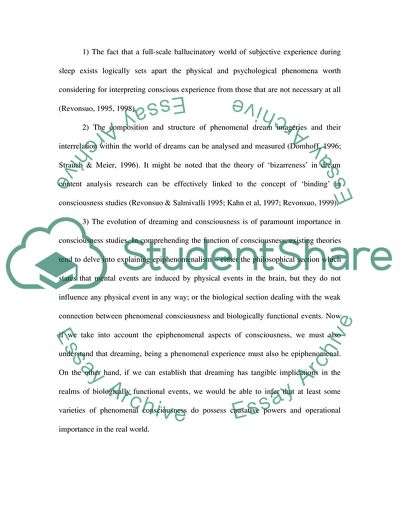Cite this document
(“Dream Analysis & Consciousness Essay Example | Topics and Well Written Essays - 1250 words”, n.d.)
Dream Analysis & Consciousness Essay Example | Topics and Well Written Essays - 1250 words. Retrieved from https://studentshare.org/psychology/1551081-dream-analysis-and-consciousness
Dream Analysis & Consciousness Essay Example | Topics and Well Written Essays - 1250 words. Retrieved from https://studentshare.org/psychology/1551081-dream-analysis-and-consciousness
(Dream Analysis & Consciousness Essay Example | Topics and Well Written Essays - 1250 Words)
Dream Analysis & Consciousness Essay Example | Topics and Well Written Essays - 1250 Words. https://studentshare.org/psychology/1551081-dream-analysis-and-consciousness.
Dream Analysis & Consciousness Essay Example | Topics and Well Written Essays - 1250 Words. https://studentshare.org/psychology/1551081-dream-analysis-and-consciousness.
“Dream Analysis & Consciousness Essay Example | Topics and Well Written Essays - 1250 Words”, n.d. https://studentshare.org/psychology/1551081-dream-analysis-and-consciousness.


